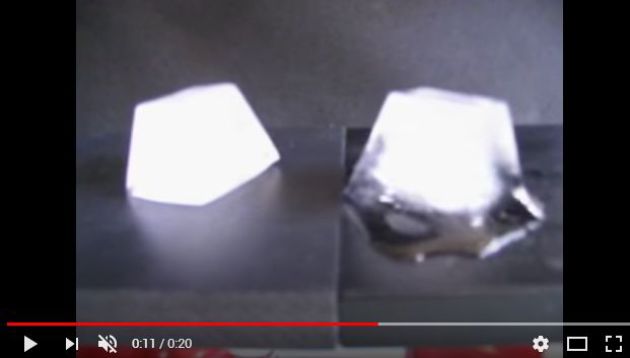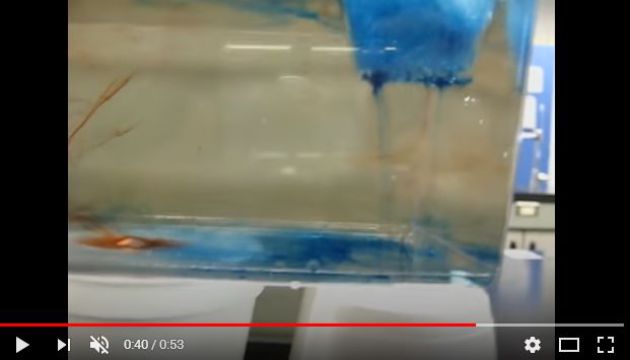Thermal transfers methods
Fondamental : Conduction (thermal diffusion)
Metal spoon with one of its edges in boiling water.
Heat loss through a window in winter.
In both cases, the thermal transfer is made through a macroscopically motionless material.
The heat transfer is microscopicaly made step by step.
It is named heat conduction/diffusion.
Metals are good conductors (they owe this property to their free electrons that take part in the microscopic energy exchanges).
Wood, glass, glass wool are bad solid conductors (and are electrical insulating).
Liquids and gases also have a thermal conductivity (really weak in the case of gases).
Heat diffusion, as well as particle scattering and electric conduction, is an example of “transport phenomenons”.
Vidéo : "Heat Conductivity of wood and aluminium "
Fondamental : Thermal convection:
Contrary to thermal conduction (diffusive type), convection corresponds to transports supported by macroscopic movements of matter.
For instance, in a fluid (gas or liquid), temperature differences in the middle create convective moves.
Hot air near to a radiator in a room is lighter than, so it tends to rise and to be replaced by colder air, triggering a convection movements in order to homogenize the temperature in the room.
For a gas, convection is far more efficient than conduction, even if the gas is motionless.
Vidéo sur les courants de convection
Fondamental : Thermal radiation
The heated bodies emit an electromagnetic radiation.
This phenomenon is called "thermal radiation".
It is not strictly speaking a heat transfer.
In particular, it can spread into vacuum while thermal conduction requires a material support.
Nonetheless, thermal radiaton will intervene in energy balances as a cause of energy exchange.
Its origines are the moves of the electric charges in the matter (that emit an electromagnetic radiation), and it is all the more important when temperature rises.
In a heated metal, the incandescence phenomenon takes place, characterised by a light emission, the same light we use with filament lamps.
The metal seems first to be reddish, then yellow, and goes white when the temperature gets higher. Conversely, at ambient temperature, infrared emissions are predominant.
Exemple : Greenhouse effect
Those three heat transfer methods can coexist of course ; take the example of a fireplace in a livingroom.
In a greenhouse used for the growth of plants, the three methods are present :
The thermal radiation coming in the greenhouse is essential.
Nevertheless, a thermal radiation transfer takes place from the greenhouse to the external medium.
The wave is invisible as its spectrum is in the infrared range.
In the greenhouse, the air that is heated near the ground has got convection movements.
This transfer contributes in homogenizing the temperature.
Finally, through the glass walls, there is a conduciton transfer.
Without heat exchange with the external air, the temperature would unreasonably increase.


